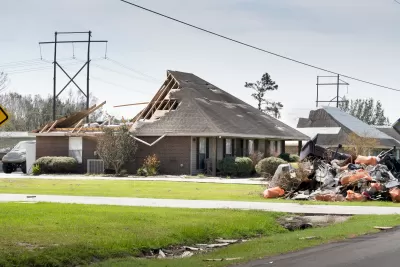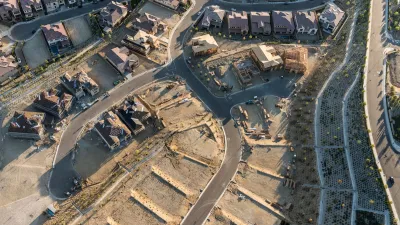As the frequency and severity of weather events increases, building codes need to be adjusted to include resilience principles.

In the face of rising disaster recovery costs and a looming property insurance crisis, Eleanor Kitzman, the founder of Resolute Underwriters, Inc., says it’s necessary to put in place stronger building codes that incorporate proven, affordable climate-resilient standards and dramatically scale up funding and incentives to help retrofit existing homes to be more resilient.
Last year, the U.S. saw the highest number of major disasters, 23 total, since the federal government started keeping records in 1980. In addition to the massive toll on human life and health, as well as the billions of dollars of related property damage and losses, these severe events are driving up insurance premiums and deductibles and leading to reduced coverage or insurance companies moving out of hard-hit areas altogether.
“The percent of uninsured homeowners has risen from 5% to 12% in just the last three years due to increasing costs,” Kitzman writes. “We can only fix this insurance crisis by fixing our underlying risk crisis. The majority of homes in the U.S. were built to codes that did not anticipate the rapidly increasing extreme weather we are experiencing today.”
She admits there is no one-size-fits-all solution, as risk mitigation is peril specific, but she highlights a few programs in the U.S. that are combining creative thinking, innovative funding, and collaborative effort to tackle the challenge:
- Alabama: The Strengthen Alabama Homes program, launched ten years ago, offers homeowners grants of up to $10,000 to install roofs that meets Fortified™ construction standard, with the aim of reducing losses from high winds, hail, tornadoes, hurricanes and other severe convective storms.
- Louisiana: A climate resilience grant from the Louisiana Office of Community Development and Louisiana Homes Corporation supported the development of 35 new homes built to Fortified standards, which were barely scratched when Hurricane Ida made landfall in August 2021, despite catastrophic damage elsewhere along the nearby coast.
North Carolina and South Carolina also have Fortified roof grant programs and last year, and Louisiana created a grant program modeled on Alabama’s SAH program. Kitzman says other states are considering similar programs.
“Stabilizing insurance markets starts with strengthening homes, families and communities. We know what needs to be done, and we need to do it now,” Kitzman says.
FULL STORY: Climate resilient construction helps mitigate disasters

Planetizen Federal Action Tracker
A weekly monitor of how Trump’s orders and actions are impacting planners and planning in America.

San Francisco's School District Spent $105M To Build Affordable Housing for Teachers — And That's Just the Beginning
SFUSD joins a growing list of school districts using their land holdings to address housing affordability challenges faced by their own employees.

The Tiny, Adorable $7,000 Car Turning Japan Onto EVs
The single seat Mibot charges from a regular plug as quickly as an iPad, and is about half the price of an average EV.

Seattle's Plan for Adopting Driverless Cars
Equity, safety, accessibility and affordability are front of mind as the city prepares for robotaxis and other autonomous vehicles.

As Trump Phases Out FEMA, Is It Time to Flee the Floodplains?
With less federal funding available for disaster relief efforts, the need to relocate at-risk communities is more urgent than ever.

With Protected Lanes, 460% More People Commute by Bike
For those needing more ammo, more data proving what we already knew is here.
Urban Design for Planners 1: Software Tools
This six-course series explores essential urban design concepts using open source software and equips planners with the tools they need to participate fully in the urban design process.
Planning for Universal Design
Learn the tools for implementing Universal Design in planning regulations.
Smith Gee Studio
City of Charlotte
City of Camden Redevelopment Agency
City of Astoria
Transportation Research & Education Center (TREC) at Portland State University
US High Speed Rail Association
City of Camden Redevelopment Agency
Municipality of Princeton (NJ)





























